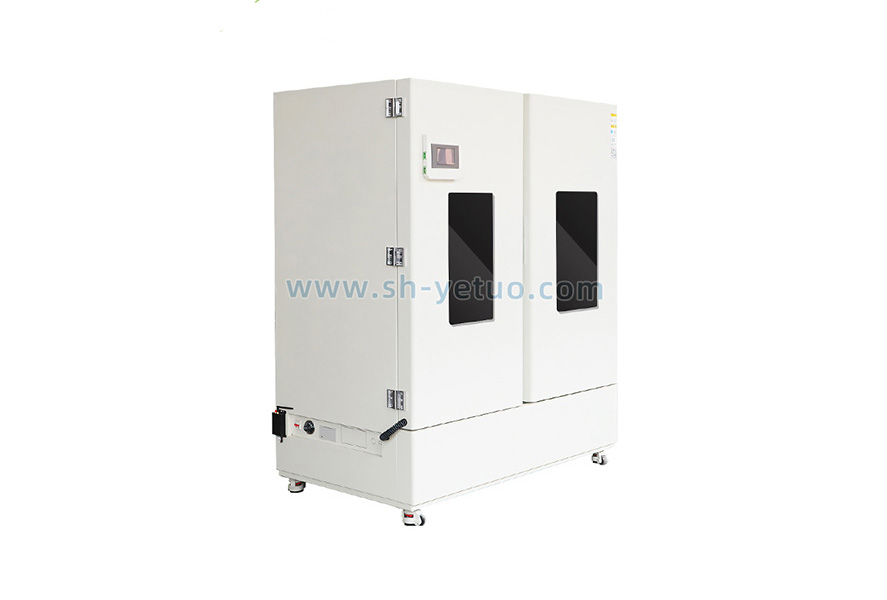In the rapidly developing new energy battery industry, from battery cell research and development to whole package testing, the Shanghai Yetuo Battery Stability Test Chamber, as an important equipment for environmental stress simulation, is widely used in key areas such as temperature and humidity aging, thermal stability assessment, and failure behavior prediction.
However, the stability testing equipment itself has multiple risk sources such as high temperature, high humidity, and battery stress release during operation. Therefore, the correct use of equipment is not only related to the accuracy of experimental results, but also closely related to personnel safety and equipment lifespan.
This article will systematically summarize the precautions for using the battery stability test box from five aspects: installation, operation, test preparation, comprehensive management, and post maintenance, for reference by R&D and technical personnel.
1、 Environmental preparation before equipment installation
Good ventilation, away from flammable areas: The test chamber should be placed in an independent space with good ventilation conditions, avoiding proximity to hazardous chemicals such as oil and solvents.
Keep the ground flat and sturdy: The equipment should be placed horizontally on a ground with strong load-bearing capacity to avoid tilting and affecting the temperature and humidity distribution inside the cavity.
Reserved full distance: A space of no less than 50cm should be reserved around the equipment for heat dissipation, maintenance, and emergency response.
Configure fire warning system: It is recommended to install smoke alarms and fire extinguishers, and for some high-risk tests, it is recommended to install gas fire extinguishing systems.
2、 Preparation before the experiment
Confirm battery status: Ensure that the tested battery has no obvious swelling, damage, or leakage. For high-risk samples, it is recommended to place them in a metal explosion-proof box for testing.
Choose the appropriate testing program: Set reasonable temperature, humidity, and time gradients based on the sample type to avoid accidents caused by excessive stress.
Check the sensors inside the box one by one: ensure that the temperature probe, humidity sensor, sample holder, etc. are installed firmly and connected correctly.
Open the vacuum valve or exhaust port (if any): Provide an outlet channel for partial gas accumulation to avoid pressure rise inside the chamber.
3、 Precautions during operation
Frequent opening of the box door is strictly prohibited: frequent opening and closing of the door during testing can cause severe temperature and humidity fluctuations, affecting data accuracy and easily leading to intense heat exchange of the sample.
Real time monitoring of data changes: It is recommended to connect a data recorder or monitoring system to track temperature and humidity curves, battery appearance changes at any time (some experiments are equipped with camera monitoring).
Abnormal alarms should be responded to in a timely manner: if high temperature, smoke, sound and light alarms occur, the power should be immediately cut off, the test should be stopped, personnel should be evacuated, and the equipment should be checked after cooling down.
4、 An full operating standard
Wear protective equipment: Operators should wear insulated gloves, protective goggles, and long sleeved work clothes, especially when placing and retrieving samples.
Stacking battery cell samples is prohibited: The battery should be laid in a single layer to avoid local overheating caused by heat accumulation, which may affect judgment.
It is strictly prohibited to modify program settings without authorization: all operations should be performed by trained and qualified personnel to avoid accidents caused by incorrect parameter settings.
5、 Maintenance and upkeep after the experiment
Timely cleaning of residues: After the experiment is completed, the box should be checked for any leakage or bulging battery residues, and cleaned to prevent corrosion and potential hazards.
Regularly calibrate the temperature and humidity system: To ensure testing consistency, it is recommended to perform a professional calibration of the sensor every 6 months.
Check the sealing and door lock mechanism: If aging or deformation of the door sealing strip is found, it should be replaced in a timely manner to ensure the stability of the cabin pressure and temperature.
Power off maintenance during long-term disuse: If the equipment is idle for more than 7 days, it is recommended to clean it and store it off the power to avoid moisture or accidental start-up.
Conclusion:
The Shanghai Yetuo Battery Stability Test Chamber is not only a tool for performance screening, but also a barrier for comprehensive testing. In the face of increasingly complex new energy materials and higher power densities, every standardized operation and meticulous inspection is a guarantee for the experimental results and the safety of the operators.
Taking the test chamber seriously means taking future battery technology seriously.


 Alibaba Store
Alibaba Store Tmall Store
Tmall Store Jingdong Sstore
Jingdong Sstore







